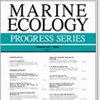Recruitment limitation increases susceptibility to fishing-induced collapse in a spawning aggregation fishery
IF 2.1
3区 环境科学与生态学
Q2 ECOLOGY
引用次数: 0
Abstract
ABSTRACT: Spawning aggregation-based fisheries are notorious for booms and busts driven by aggregation discovery and subsequent fishing-induced collapse. However, environment-driven sporadic recruitment in some since-protected populations has delayed recovery, suggesting recruitment-limitation may be a key driver of their population dynamics and fishery recovery potential. To glean insight into this dynamic, we focused on an overexploited temperate aggregate spawner, barred sand bass Paralabrax nebulifer, and leveraged a long-term mark-recapture data set spanning different oceanographic and harvest histories in a custom Bayesian capture-mark-reencounter modeling framework. We coupled this demographic analysis with long-term trends in sea surface temperature, harvest, adult and juvenile densities, and historical accounts in the literature. Our results point to a history of multidecadal windows of fishing opportunity and fishing-induced collapse largely driven by sporadic, warm-water recruitment events, in which recruits may be externally sourced and local recruitment is negatively influenced by harvest. Following the last collapse, recruitment remained elevated due to novel, anomalously warm conditions. Despite signs of incipient population recovery, spawning aggregations remain absent, indicating that other potential factors (e.g. continued fishing during spawning season, Allee effects) have delayed fishery recovery to date. Recruitment-limited aggregate spawner populations, especially those at their geographic margins, are highly susceptible to sudden and potentially extended periods of collapse, making them ill-suited to high catch-per-unit-effort fishing that occurs on spawning grounds. If the goal is to balance protecting spawning aggregations with long-term fishery sustainability, then limiting aggregation-based fishing during the spawning season is likely the best insurance policy against collapse and recovery failure.繁殖限制增加了产卵集群渔场因捕捞引起的崩溃的易感性
ABSTRACT: 以产卵聚集为基础的渔业因聚集的发现和随后由捕捞引起的崩溃而导致的繁荣和萧条而臭名昭著。然而,在一些受保护的种群中,由环境驱动的零星繁殖推迟了种群的恢复,这表明繁殖限制可能是种群动态和渔业恢复潜力的关键驱动因素。为了深入了解这一动态,我们重点研究了一种过度捕捞的温带集合产卵鱼--条纹沙鲈(Paralabrax nebulifer),并在定制的贝叶斯捕获-标记-重计数建模框架中利用了跨越不同海洋学和捕捞历史的长期标记-重捕获数据集。我们将这一人口统计学分析与海面温度、捕捞、成鱼和幼鱼密度的长期趋势以及文献中的历史记载相结合。我们的研究结果表明,在历史上曾出现过数十年的捕捞机会窗口和捕捞引起的崩溃,这主要是由零星的暖水繁殖事件驱动的,在这些事件中,新鱼种可能来自外部,而本地繁殖则受到捕捞的负面影响。在上一次崩溃之后,由于新出现的异常温暖条件,新鱼种的繁殖率仍然很高。尽管出现了种群初步恢复的迹象,但产卵集群仍未出现,这表明其他潜在因素(如产卵季节继续捕捞、阿利效应)延迟了迄今为止的渔业恢复。繁殖受限的集合产卵种群,尤其是那些处于地理边缘的种群,极易受到突然和潜在的长时间崩溃的影响,使其不适合在产卵场进行高单位渔获量捕捞。如果目标是在保护产卵群与渔业长期可持续性之间取得平衡,那么在产卵季节限制基于产卵群的捕捞可能是防止崩溃和恢复失败的最佳保险政策。
本文章由计算机程序翻译,如有差异,请以英文原文为准。
求助全文
约1分钟内获得全文
求助全文
来源期刊

Marine Ecology Progress Series
环境科学-海洋学
CiteScore
5.30
自引率
8.00%
发文量
238
审稿时长
3 months
期刊介绍:
The leading journal in its field, MEPS covers all aspects of marine ecology, fundamental and applied. Topics covered include microbiology, botany, zoology, ecosystem research, biological oceanography, ecological aspects of fisheries and aquaculture, pollution, environmental protection, conservation, and resource management.
 求助内容:
求助内容: 应助结果提醒方式:
应助结果提醒方式:


